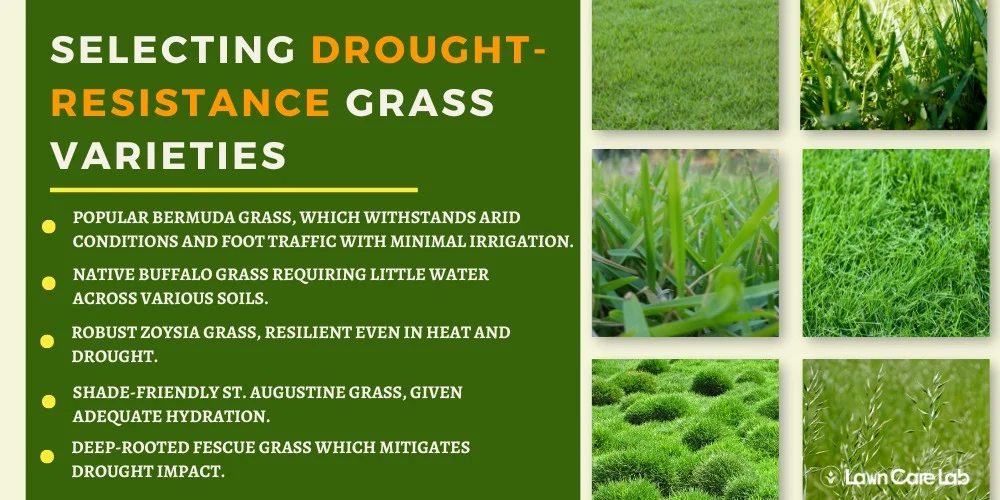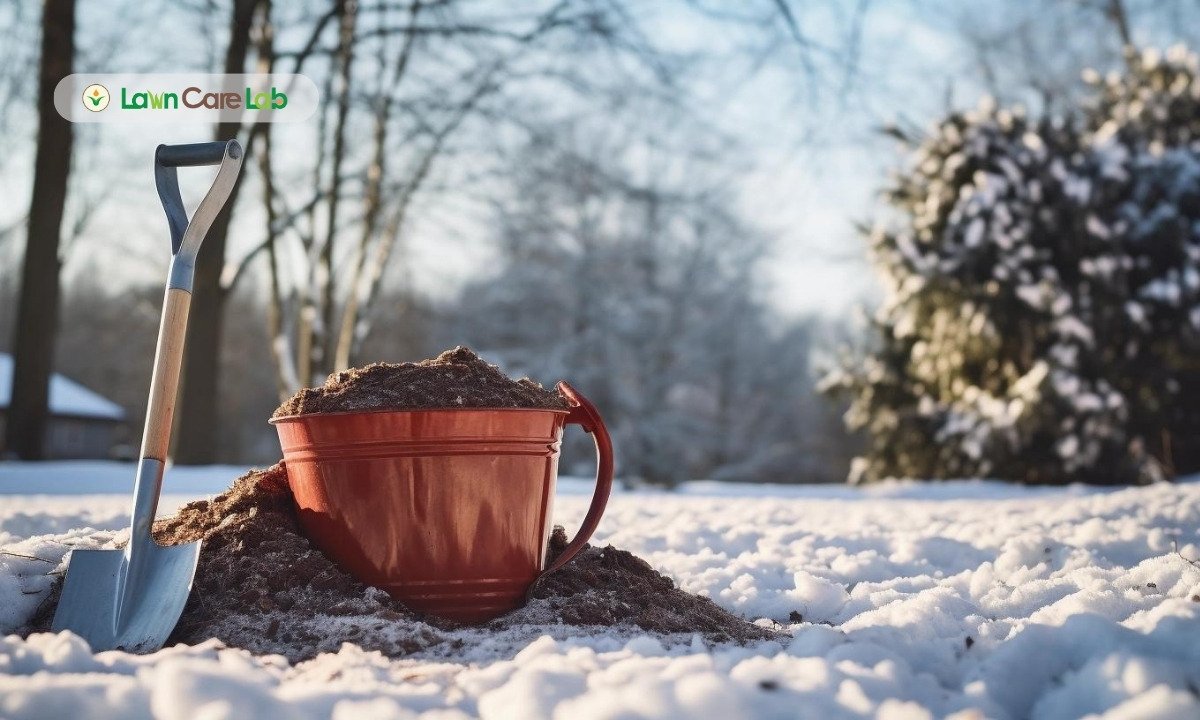Inhabiting the perpetually sunny California, you harbor an unyielding aspiration for a lush, green lawn. The ever-present concern of water scarcity, however, poses a formidable challenge.
Fear not! This comprehensive guide offers invaluable insights to champion the upkeep of vibrant lawns in California and its arid climates. It imparts practical knowledge on water conservation tactics, introduces drought-tolerant grass species, and presents options for professional lawn care.
Together, we’ll transform your barren expanse into a verdant haven, both responsibly and sustainably.
Table of Contents
Green Lawns in California

Preserving a lush lawn poses a unique challenge in California’s parched landscape. The task might appear formidable considering the prevalent water shortages and arid conditions.
However, we are ready to navigate you through strategies to encourage a flourishing lawn and promote water conservation.
The Challenge of Maintaining a Green Lawn in Arid California
In the desert-like climate of California, cultivating a verdant lawn presents a unique set of obstacles. The inhospitable natural circumstances, compounded by strict water limitations, create a complex landscape for grass growth.
The relentless drought conditions can instigate:
- Persistent wilting: The continual aridity often results in a dispirited, languishing lawn, which can dampen your spirits.
- Stunted growth: Grass requires a specific hydration level for growth, and the paucity of water in these conditions makes this an intimidating endeavor.
- Proliferation of pests and diseases: Dry environments may escalate the vulnerability of your lawn to destructive pests and diseases, putting your home’s exterior space at risk.
Understanding these hurdles is paramount in formulating a plan to surmount them. With meticulous organization and implementation, achieving a lush, green lawn in California’s dry climate is within your grasp.
Understanding California’s Unique Climate
Our aim is to unravel the complexities of California’s distinctive, arid climate and its consequential influence on your lawn.
We’ll examine the hurdles presented by this parched landscape, placing importance on the impact of drought on lawn maintenance.
Gaining proficiency in these subtleties will guide you toward more eco-friendly and effective lawn care strategies.
The Impact of California’s Dry Climate on Lawns
Maintaining a verdant, thriving lawn in California presents a distinct set of obstacles. The state’s parched climate, characterized by extended periods of drought and elevated temperatures, often results in desiccated and discolored lawns.
This article will elucidate these hurdles and provide strategic lawn care techniques to combat them effectively.
The Role of Drought in California Lawn Care
In spite of the arid conditions typical of California, the preservation of a verdant, flourishing lawn remains achievable. However, it’s pivotal to comprehend the significant influence drought can have on lawn care.
Grasping the implications of drought:
- Prolonged aridity can induce a state of dormancy in your lawn, manifesting as a brown and unsightly hue.
- Habitual dry spells have the potential to inflict substantial damage on the overall well-being of your lawn.
- Implementing tailored adaptive strategies can fortify a robust and aesthetically pleasing lawn.
Water Conservation Techniques for a Green Lawn
We shall explore proficient watering systems, such as localized irrigation and absorption hoses, which are instrumental in achieving this goal.
It is crucial to create a customized watering schedule that caters to the specific needs of your lawn and adapts to changing weather conditions.
Efficient Watering Systems: Drip Irrigation and Soaker Hoses
Resourceful irrigation systems such as drip mechanisms and soaker hoses are paramount in water conservation and maintaining verdant lawns. These inventive tools are engineered for precision watering, curbing excess, and promoting optimum utility.
Grasping their operation and advantages can revolutionize your lawn maintenance techniques and substantially bolster water preservation endeavors, especially in parched territories like California.
The Importance of Watering Schedule
To marry the vital cause of water conservation with the quest for a verdant landscape, a meticulously constructed watering plan is essential, incorporating advanced methods such as drip irrigation and soaker hoses.
Your lawn’s flourishing condition hinges on:
- Consistent, aptly timed irrigation
- Ingenious resource management
- Your unwavering allegiance to ecological balance
Bear in mind that a thoughtfully curated plan safeguards water resources, bolsters lawn vitality, and is a testament to your conscientious environmental stewardship.
Selecting Drought-Resistant Grass Varieties

Picking the right grass is key for a thriving lawn in California’s dry climate. Bermuda grass is popular due to its drought resilience, but other species work well too.
Here are some arid-friendly grass types for a neat and beautiful lawn.
Bermuda Grass: A Popular Choice for California Lawns
Consider Bermuda grass for your Californian lawn. It’s resilient in arid conditions, thrives in the state’s climate, and can withstand droughts in the West.
- Drought tolerance: Its modest water requirement ensures your turf remains vibrant even during parched spells.
- Robustness: Its capacity to endure heavy foot traffic renders it ideal for children’s play and convivial family gatherings.
- Minimal upkeep: Its low-maintenance nature allows you more leisure time for other pursuits.
Opting for Bermuda grass translates to a beautiful, strong lawn with minimal stakes and fuss. Bask in the safe splendor of nature with this sturdy, drought-tolerant selection.
Other Drought-Tolerant Grass Options
While Bermuda grass may top your list of preferences, exploring other drought-enduring grass varieties that flourish in California’s parched climate would be prudent.
Buffalo grass, a local species, is worth considering as it demands less hydration and is versatile with different soil types.
Another viable option is Zoysia grass, recognized for its robust root system and impressive resilience to heat and drought.
Conversely, St. Augustine grass presents an excellent option for shaded areas, albeit requiring slightly more hydration than its counterparts.
Lastly, Fescue grass, despite needing a moderate quantity of water, leverages its deep roots to withstand drought conditions.
The secret to a verdant, thriving lawn in California’s demanding climate hinges on choosing the apt grass variety.
Lawn Maintenance in a Dry Climate
Navigating the complexities of maintaining a lush lawn in California’s parched landscape is a task that requires an in-depth understanding of several key factors.
The role of fertilizer is paramount in this equation. It provides grass’s necessary nutrients to thrive in such harsh conditions.
Aeration, a process that enables the soil to breathe, is another crucial factor that directly influences your lawn’s overall health.
The Role of Fertilizer in Maintaining a Green Lawn
Preserving your verdant sanctuary amid California’s parched conditions hinges upon the judicious use of fertilizers. Despite the aridity, these miraculous compounds invigorate the soil, satiating your turf’s nutritional needs and ensuring a luxuriant, evergreen expanse.
Subsequent sections will illuminate optimal fertilizer varieties for such climates alongside pragmatic advice for their application.
Understanding the Importance of Regular Lawn Aeration
When you integrate habitual lawn aeration into your gardening regimen, particularly in the parched environment of California, a notable enhancement in your lawn’s well-being is apparent.
Through aeration, one can:
- Facilitate deep water penetration, thus stimulating root growth.
- Enable nutrients to access the roots, amplifying your lawn’s lushness.
- Promote the circulation of oxygen, thus fostering robust health.
Moving on, let’s discuss how the practice of mulching can further elevate your lawn’s vigor.
The Benefits of Mulching
Having honed the art of regular lawn aeration, mulching is the subsequent critical tactic for preserving a flourishing and lively lawn in California’s parched conditions.
This process conserves water and aids in weed control and lawn health enhancement.
It presents an effective and environmentally safe approach to lawn care in arid climates, delivering essential nutrients whilst optimizing water conservation.
Apply this method judiciously to cultivate a verdant, lively expanse.
Professional Help for Lawn Care
Exploring the option of professional lawn maintenance services can be highly beneficial, especially in California’s dry climate.
Here are the compelling reasons why you might need it:
Safety: Professionals employ secure, sanctioned methods to maintain your lawn, ensuring:
- Correct operation of equipment
- Secure use of fertilizers and pesticides
Proficiency: Their accumulated experience equips them to handle intricate lawn conditions, providing:
- Accurate lawn evaluation
- Appropriate treatment strategies
Efficiency: The freedom to relish your immaculately maintained lawn, devoid of the burden of upkeep, with their:
- Consistent maintenance timelines
- Prompt problem resolution
Remember, a verdant, thriving lawn isn’t achieved overnight but rather through continual, expert attention.
Achieving a Green Lawn in the Arid West
Nurturing a lush lawn in California’s arid climate is achievable with a strategic approach and perseverance.
Prioritize water conservation, use drought-resistant turf, and seek professional help when necessary.
Keep in mind that you aren’t warring with nature but collaborating with it. With meticulous planning, the challenges of the West’s arid climate can be transformed into opportunities.
Continually evaluate the health of your lawn and tweak your strategies as needed. This journey may demand patience, but the fruition of a thriving lawn is certainly a worthwhile pursuit.
You’re creating a green oasis for your household and benefiting the environment. Put on your gardening gloves and start this rewarding endeavor!
- How Green Spaces Influence Community Interactions - July 8, 2024
- Lawn Fungal Diseases: Identification and Treatment - July 3, 2024
- Lawn Care for All Seasons: A Year-Round Guide for Extreme Climates - June 24, 2024





